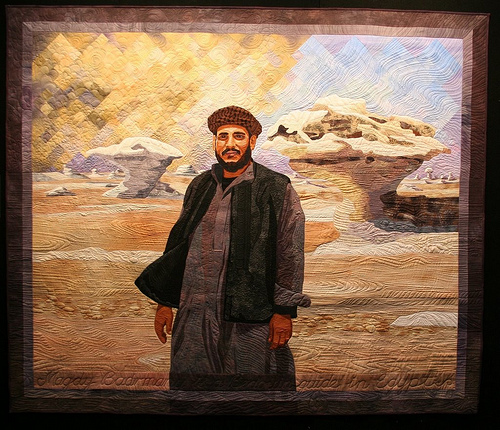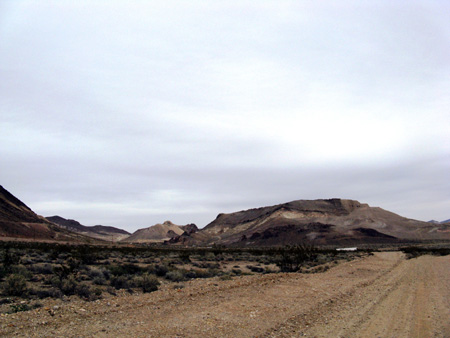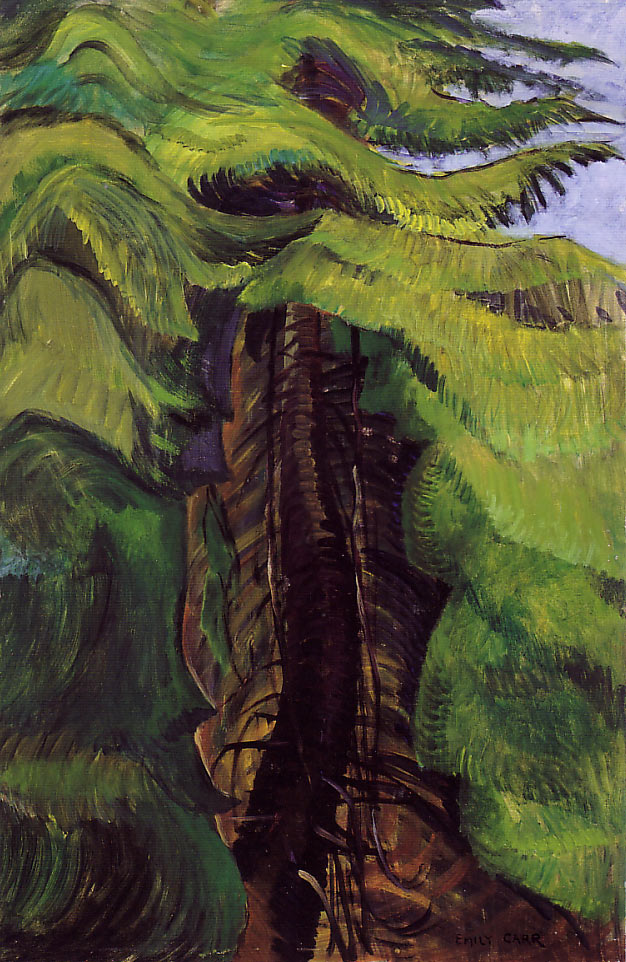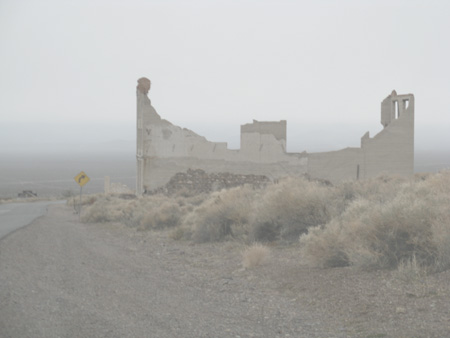Posted by June Underwood on August 17th, 2009
In a few months, I’ll be back in Nevada, tackling the Amargosa Playa again. This time I want to do a set of painted panels, five 5×5 foot ones (25 horizontal feet). I have various notions of how this might work out in paint, but will have to wait until I get there to see what actually happens. I also want to do something similar in textiles, perhaps only some preliminary image making, saving stitching for when I return to Portland. But I am mulling over both projects in my mind, trying to think how I might work them.
I just read a blog entry (dated August 17) by Jenny Bowker, who is an art colleague who works in quilted textiles. She tackled the same kind of landscape and had the same kind of hopes about what she might evoke, with some additions that the Amargosa doesn’t have: the presence of a handsome driver and some marvelous land forms. Her blog entry, which finishes with the photo of her textile work, is worth reading for sheer pleasure. But it makes me somewhat nervous about my ambitions.
Here’s the photo of Jenny’s artwork, which won a prize at the Canberra quilt exhibit and, I’m sure, will be seen often at other places around the globe.

Jenny Bowker, Sandstorm over the White Desert, about life size (see her blog entry for scale)
And here is an photo or two of what I will be facing, again

more… »
Posted by June Underwood on August 10th, 2009
Some of you already know that I’ve been copying Emily Carr paintings for the last week or so, attempting to understand more fully how she does forests and trees.

Emily Carr, Cedar Sanctuary, 38 x 26″, Oil on paper, 1942
I’ve learned a lot through this exercise [ including the rule that I must paint-over or otherwise destroy the copies I’ve made before someone comes into the studio and exclaims with pleasure over them. Such an exclamation forces me to admit that what the complimenter is seeing is a copy, causing embarassment all round.] Carr’s finding of shapes in the complexity, of making color within the shapes, and of “draping” her branches are all valuable for my own art-making thoughts.
However, during this process, I had other kinds of questions occur.
more… »
Posted by June Underwood on July 26th, 2009
I feel as if I have been away forever. Life overtook my Art and Perception, although not completely my art and not completely all my perceptions.
So here’s an update.
After a long struggle with health and painting, I’ve finally revived and have been painting the landscapes of the Willamette Valley in western Oregon. The change of venue from the wild and awesome desert to the gentle scenery of the Valley was fairly traumatic and also the cause (I think; I hope) of some really bad paintings, now discarded. But I’ve kept a few and think I may be able to tolerate the pretty landscapes and conventional views to which I’ve been subjected. (I’m engaged with a group of plein air artists who always choose not to paint the snarky or sardonic.)
The paintings imaged below have been done since the end of June. The first four (through the Storm) were attempts to provide a sense of expansion outward rather than focusing into the painting. This outward away from the center is what I feel the desert does, and I thought painting sky and/or water might keep me in touch with that expansion of space so essential to desert painting.

Morning Fog in the Gorge, 12 x 16″, Oil on board, 2009
more… »
Posted by Angela Ferreira on June 26th, 2009

Uncondiotionally 2009
Tittle: Unconditionally
Size: 102×76 cm
Medium: Oil on canvas
Don’t know if you all read on my web biography that recently I have embarked in a deep and personal spiritual journey that has opened a door to the ethereal world of Reiki and crystal healing.
Through meditation and welcoming my Spirit and Angels to guide me through my work I have learned to give Reiki to my paint tubes and canvases before I start a painting.
My intentions are to create more than just a painting, but share a healing experience through the vision of the Divine irradiating a sense of peace and love of nature.
I am not sure if you all seen the film ‘The Secret’ but there is a very interesting part about a Feng Shui consultant working with a painter and how his works become the reality in his life through the law of attraction.
What are your intentions in your creations? Are you attracting what you want into your life through your works? Are you really showing your world and the true inner self?
What do you really want to achieve?
Your true self is how you feel yourself when nobody’s watching. It is where your deepest thoughts live. It is what you ultimately think of yourself, how you treat yourself and what you fear others might see inside you. It is your most native and real personality, your true Spirit!
Once you change the way you feel about yourself and evoke it into your works, the law of attraction will change your life. You are the magnificent creator of your own reality!
Posted by Steve Durbin on June 17th, 2009
How do we actually look at pictures, and how does that affect what we see in them? I started thinking about this again when I read about the Kuuk Thaayorre, an Aboriginal society in northern Australia. Lera Boroditsky (mentioned previously on A&P) reports on The Edge that their language and culture describe space and spatial relationships not in body-relative terms, but in absolute, land-fixed terms (I wonder if this is true for many Aboriginal langiages). When given a sequence of picture cards (showing a banana being eaten, or other obvious process) to arrange in time order,
Instead of arranging time from left to right, they arranged it from east to west. That is, when they were seated facing south, the cards went left to right. When they faced north, the cards went from right to left. When they faced east, the cards came toward the body and so on. This was true even though we never told any of our subjects which direction they faced. The Kuuk Thaayorre not only knew that already (usually much better than I did), but they also spontaneously used this spatial orientation to construct their representations of time.
more… »
Posted by June Underwood on May 4th, 2009
A reference to a recent New Yorker Critic at Large (March 30th) review suggests that a work of art is good if it rises out of necessity and if the artist is capable of carrying out the idea to its appropriate end. As a letter writer paraphrases:
“This matters; this has purpose” and “I can do this, I am able, I can carry out this task to its appropriate end” (correspondence from Joachim B. Lyon, Stanford, California, New Yorker, May 4, 2009).
I found these notions both bemusing and contra-indicated. What do you think?
(Oh, and here’s an image from Rhyolite Nevada ghost town. I don’t know if it has either purpose or, if I paint it, as I intend to do, if I am adequate to the chore.)

Posted by Steve Durbin on May 1st, 2009
Frank Stella famously said “what you see is what you see.” He wanted to stay close to perception and not stray too far into literary or personal interpretations. My title, cribbed from an article in Science, refers not to the invasion of personal emotion, but about the recently experimentally observed influence of literal, tactile touch sensations on visual experience.
Stare at a waterfall long enough, and nearby stationary objects such as rocks and trees will seem to drift up. The optical illusion is called motion aftereffect, and it may trick more than just your eyes, according to a new study. When subjects watched a stationary stripe on a computer screen after a machine stroked their fingertips, the motion of the stroking created the illusion that the stripe was moving. The discovery demonstrates for the first time a two-way crosstalk between touch and vision, challenging long-held notions of how the brain organizes the senses.
I guess the neuroscience of what’s involved here may similar to the sight-sound synaesthesia we’ve discussed before (see comments discussions here and especially here). But this is the first I’ve heard of a tactile version of it. Has anybody out there had experiences along those lines? Other than seeing stars when you bump your head?





